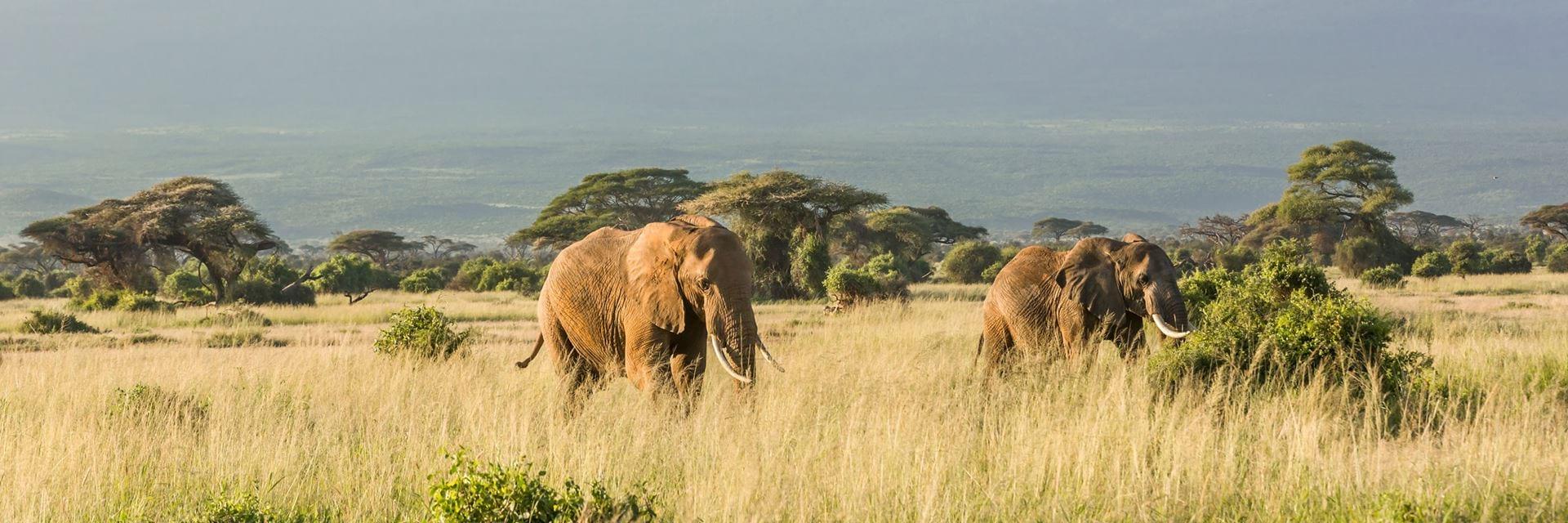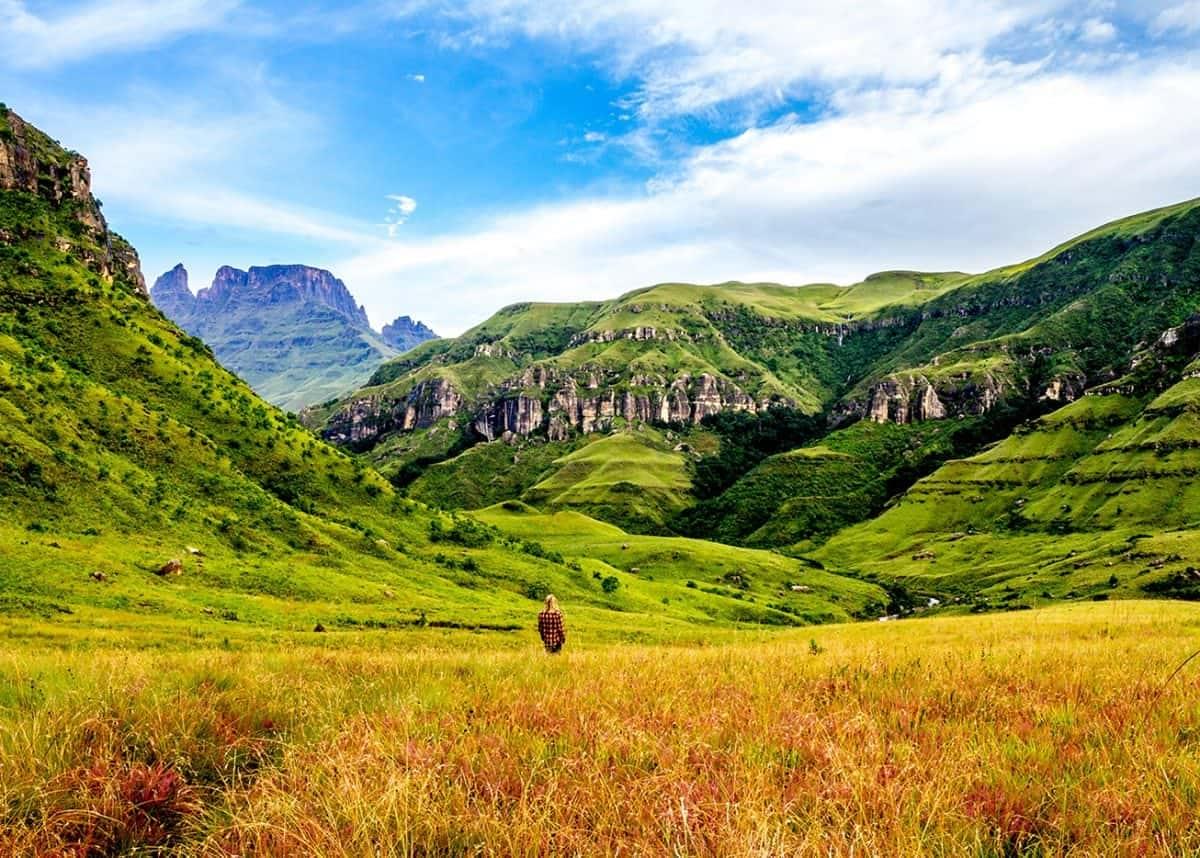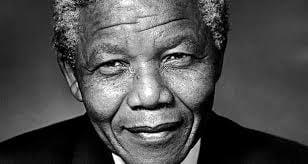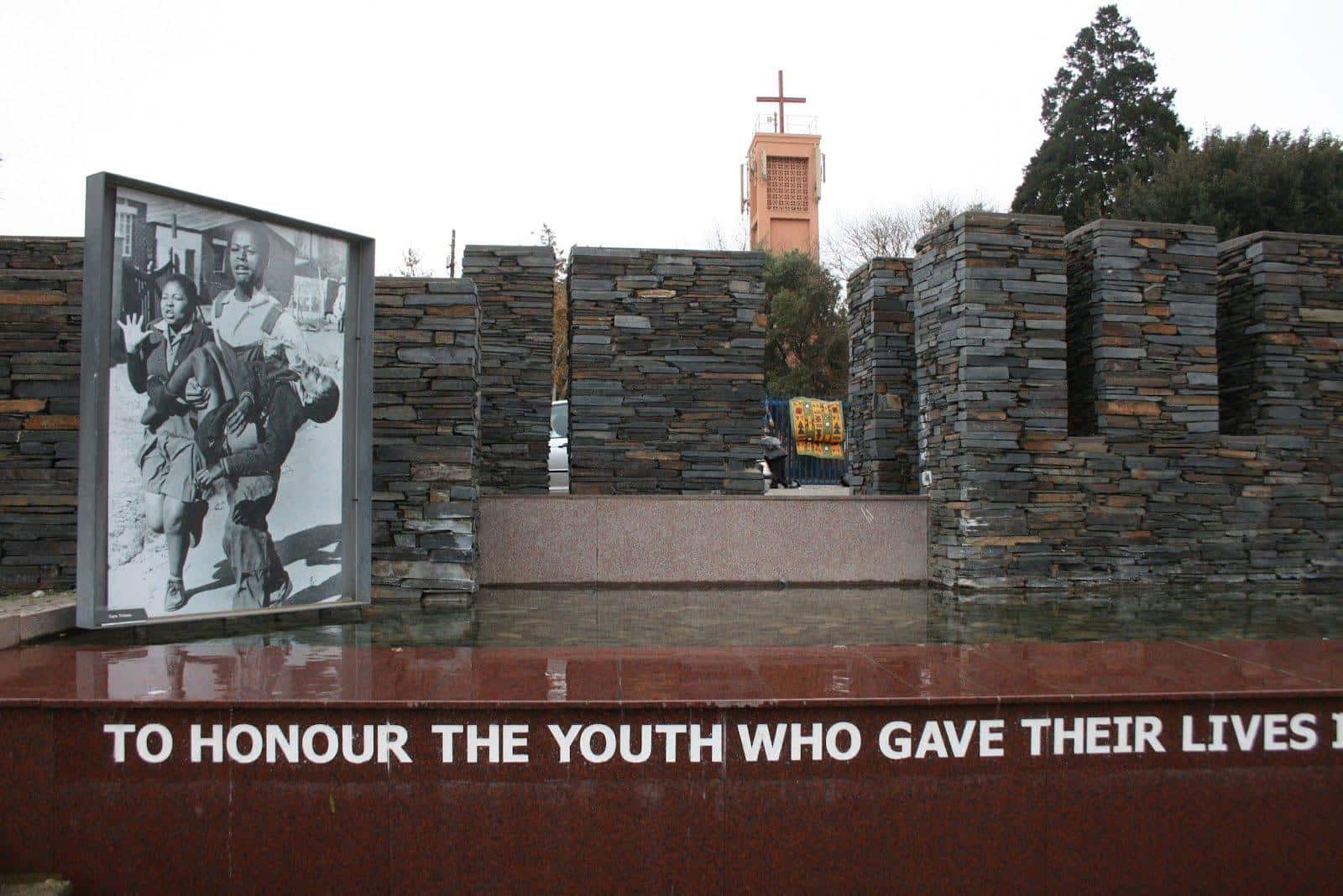44 Fascinating facts about Ethiopia
Ethiopia as a country had its origin in about 980 B.C., which makes it one of the oldest nations in the world.
Due to this very long history and an unmatched diversity of people and cultures, the country has often been described as a “museum of peoples”. With such a highly diverse population, Ethiopia houses an intricate tapestry of language and ethnic groups.
Also nicknamed the “Land of 13 Sunshine’s”, Ethiopia is often described as one of the most enthralling and enchanting places in the world – and definitely in Africa.
Ethiopia may not be the first place any traveller think of when planning or booking a next holiday, but it may just as well soon be the case. As African country Ethiopia can boast about having been at peace for at least the previous 15 years or more years and its economy is consequently one of the fastest growing in the world.
With the added bonus of an astounding diversity of landscapes, mixture of cultures and history that tracks back to when homo sapiens first started to raise itself up onto two legs, a traveller suddenly may look forward to a surprising and breath-taking travel destination.
But talking about planning and holiday dated, you probably didn’t know that this unique nation even has its own calendar?
This is but one of a myriad fascinating facts about the country, of which a number are discussed in this article. Looking at the country’s ancient and statutory history, its religion, culture, people and natural phenomena, here are at least 44 random but fascinating facts that you can ponder in anticipation of a visit to this eastern African country in the near future:
History
Fact number 1 – The oldest people in the world probably lived here.
Some of the oldest people in the world, in fact the earliest hominid populations, seem to have lived in Ethiopia. It was most conceivably in this specific region where Homo erectus evolved and left Africa to populate Eurasia more than 1.8 million years ago.
Several archaeological findings in the Afar region of Ethiopia have strengthened suggestions that the country may be where humanity as we know it, started out from. The earliest example of human ancestors using tools has been traced to Ethiopia and a 3.2-million-year-old hominid skeleton was found here by paleoanthropologists Donald Johanson and Tim D. White in 1972.
Fact number 2 – Ethiopia is the oldest independent country in Africa and the only African country that could evade colonial rule.
Ethiopia is the only country in Africa that was never formally brought under colonial control – a fact that locals are very proud of and will never cease to tell visitors.
Ethiopia fought against the so-called Scramble for Africa, and it is one of the very few countries that were never colonised, though Italians temporarily occupied it for about five years.
The Scramble for Africa, also called the Partition of Africa or the Conquest of Africa, was the invasion, occupation, division, and colonisation of African territory by European powers between 1881 and 1914, a period known to historians as the New Imperialism.
Ethiopia was also the first African nation to join the League of Nations. The league, abbreviated as LON, was established in 1920 as the first worldwide intergovernmental organisation whose principal mission was to maintain world peace.
In response to Ethiopian appeals, the League of Nations condemned the Italian invasion in 1935 but its imposed economic sanctions on the invaders remained mainly ineffective because of general lack of support.
Fact number 3 – Ethiopia was one of the first African forces to achieve a significant victory over a European colonial power.
Ethiopia had to defeat two Italian efforts to colonise the country to remain independent.
The First Italo-Ethiopian War was fought between 1895 and 1896 after the Italians claimed that the Treaty of Wuchale turned Ethiopia into an Italian protectorate. In a full-scale war Italian troops from Italian Eritrea had initial success until Ethiopian troops counterattacked their positions and besieged the Italian fort of Mekele and forced them to surrender.
Italian troupes were defeated in the Battle of Adwa, where the Ethiopian army dealt them a critical blow and forced their withdrawal back into Eritrea. This war ended with the Treaty of Addis Ababa and became a foremost symbol of pan-Africanism.
It secured Ethiopia’s sovereignty until 1936 when the Italians launched their second effort and succeeded in militarily occupying the country for the following six years (from 1936 – 1941). Ethiopian forces severely opposed it with military force and the Italians could never succeed to bring the whole country under their control.
Today many of the locals boast that they had “just waited until the Italians had built them some railways and nice buildings, before they decided to kick them out.”
Some other African countries, like Ghana, even have adopted their own flags with the same colours as that of Ethiopia (green, red and yellow) because of the fact that the country had been able to defeat a European power.
Fact number 4 – Ethiopia has a rich history of rulers, including emperors and queens.
Ethiopian Queen Zewditu, which was the empress of Ethiopia and reigned from 1916 to 1930, was the first globally recognised female African head of state. Ethiopia also briefly had a Jewish queen, Queen Gudit (Judith), who ruled parts of the country somewhere in the 10th century. She is ironically remembered for burning down many churches.
Ancient Ethiopian queens were uniformly named Candace, which was pronounced “kan-dah-ke”.
All the emperors that ruled Ethiopia until 1974, had claimed to be descendants of King Solomon of the Bible and Makeda (the Ethiopian Queen of Sheba). Haile Selassie I was the last Ethiopian emperor.
Current affairs
Fact number 5 – Ethiopia is perceived to be the diplomatic capital of the African continent.
Ethiopia hosts the headquarters of African and international organisations such as the African Union, UN Economic Commission for Africa, UNESCO and UNDP. Who would have thought that the otherwise dusty, overcrowded city of Addis Ababa, typical of several other African cities, could be the host city for headquarters of such distinguished and important global role players.
Ethiopia was in fact also the birthplace of Pan-Africanism – the worldwide movement that aims to encourage and strengthen bonds of solidarity between all indigenous and diaspora ethnic groups of African descent. It was welcomed by Emperor Haile Selassie I, and is perceived as the movement that eventually led to the birth of the current African Union.
Ethiopia also has the most UNESCO World Heritage Sites in Africa. The nine sites are Aksum, Fasil Ghebbi, Harar, Konso Cultural Landscape, Lower Valley of the Awash, Lower Valley of the Omo, Rock-Hewn Churches, Simien National Park and Tiya.
Fact number 6 – Ethiopia is the country with the second highest population in Africa, and with almost 1,5 % of the world population.
The current population of Ethiopia is estimated to be about 115 184 700 by August 2020, based on Worldometer elaboration of the latest United Nations data. This is about 1.47% of the total world population. Ethiopia ranks number 12 in the list of countries of the world by population.
The only country in Africa with a larger population is Nigeria, which already had a population of over 200 million people in 2019. The current metro area population of the country’s capital Addis Ababa is estimated at 4 794 000.
Ethiopia’s population density is 115 per Km2 on a total land area of 1 000 000 Km2, with 21.3 % of the population living in urban areas.
Fact number 7 – Ethiopians have one of the lowest life expectancies in the world.
Current figures estimate that the life expectancy for Ethiopia is 66.71 years. These low figures are probably caused by poor sanitation in the country and are made worse by the very poor state of the nation’s health care system. The median age in Ethiopia is 19.5 years, but despite that, the country has produced its fair share of “firsts” and famous people.
Fact number 8 – Ethiopia has the most orphans in the world.
Of the more than 145 million orphans worldwide, more live in Ethiopia than in any other country in the world. About thirteen percent of Ethiopian children are missing one or both parents. Nearly a quarter of these parents have had lost their lives in the AIDS epidemic.
Fact number 9 – Ethiopia was ranked as one of the poorest countries in the world but has shown miraculous growth over the last few years.
In 2006 Ethiopia ranked as 170 out of 177 of the poorest countries on the Human Development Index, with 50% of its population living in poverty and 80% that lived on the bread line.
In 2000, it was the third-poorest country in the world, but IMF estimates show that Ethiopia was the third-fastest growing country of those with 10 million or more people, in the world between 2000 and 2016, according to GDP per capita. The country’s poverty rate fell to 31% by 2011 and it was projected that Ethiopian GDP per capita would expand at an annual pace of 6.2% through to 2024.
Fact number 10 – Addis Ababa is the highest capital city in Africa.
At an altitude of 2 450 metres, Addis Ababa, the capital city of Ethiopia, is the highest capital city in Africa, and the fourth highest in the whole world.
The city is situated in the shade of Mount Entoto, the highest peak on the Entoto Mountains, which is about 3 200 meters above sea level.
Fact number 11 – More than 200 dialects are spoken by the peoples of the country.
Ethiopia’s national language is Amharic, but in total over 82 languages are spoken by different tribes. And what is more, no less than 200 variations, or dialects, of these languages are used by the 110 million people in the country.
English is the language of instruction at all the country’s institutions of higher learning, while the most widely spoken local languages are Amharic, Oromo, Somali and Tigrinya.
Amharic is recognised as the official language of the country. The name of the capital Addis Ababa is an Amharic word. Some says that it means ‘new flower’ while others translate it as ‘white flower’.
The name Ethiopia is from the Greek word “Αιθιοψ” or “aithiops,” (put together from “aitho” and “ops”), which can be translated as “charred or burnt face”. This was how the ancient Greeks referred to the dark-skinned people of eastern Africa. The country now known as Ethiopia was also in those ancient times referred to as Abyssinia, which was used generally to refer to the land to the south of Egypt.
Fact number 12 – Ethiopia’s national animal is the Abyssinian lion.
The Abyssinia lions, or Panthera Leo Abyssinica, are smaller than their east African cousins and the males have distinguishable black manes. Experts say less than 1 000 Abyssinian lions can still be found in Ethiopia.
The last of their descendants are apparently still kept in the Addis Ababa zoo, built by in 1949 during the reign of Emperor Haile Selassie, known as the “Lion of Judah”. The zoo was intended to rear the animals for exhibition as symbols of his rule.
Fact number 13 – Ethiopia was the first country in Africa to own and operate a Boeing 787 Dreamliner.
In 2012, Ethiopia and its national carrier Ethiopian Airlines, became the first country in Africa, and only the second in the world, to own and operate a Boeing 787 Dreamliner. The aircraft was named “Africa One” and assigned the tail number ET-AOQ.
Ethiopian Airlines is one of Africa’s biggest airlines and generally has a good safety record. At the time they bought 10 of Boeing’s flagship aircraft, which are built from lightweight material, rather than aluminium, to save fuel.
Religion
Fact number 14 – The country has been mentioned several times in both the Bible and the Quran, as well as Homer’s Odyssey and a number of other ancient books.
The word ‘Ethiopia’ appears 45 times in the King James version of the Bible. Whenever the word is used in the Bible, it most of the time refers to the land south of Egypt.
In the story about the Queen of Sheba who visited King Solomon, Sheba is believed to have been the Queen of Ethiopia. It is through her that Ethiopian rulers claimed royalty.
Ethiopia is also mentioned in the Quran. When Mohammed saw the persecution to which his followers were subjected to in Mecca, he allegedly told them to find a safe haven in Abyssinia in northern Ethiopia, where they would “find a king who does not wrong anyone.”
In another religious twist, some traditionalists believe that Ethiopia’s Oromo religion, whose God is called Waka, is the oldest, monotheistic religion in the world and that Moses borrowed the Ten Commandments from them.
Fact number 15 – One of the oldest forms of Christianity in the world is found in Ethiopia.
The Ethiopian Orthodox Church, known as Tewahedo, is one of the oldest forms of Christianity in the world and came to Ethiopia from Egypt, where Egyptians belonged to the Coptic Church.
Around A.D. 330, the Apostle of Ethiopia Frumentius converted the Axumite king Ezana, who made Christianity the empire’s official religion. King Ezana is hailed as the man behind that first church in the country, built in the 4th century. Today, Ethiopians predominantly practise Christianity with Christians amounting to 61% of the population (43% Ethiopian Orthodox and 18% Protestant) and Muslims about 34%.
Fact number 16– Some of the oldest Christian relics can be found in Ethiopia.
Aksum, a city in northern Ethiopia, is known for its tall, carved obelisks, relics of the ancient Kingdom of Aksum. Its centuries-old St. Mary of Zion Christian church and pilgrimage site is believed to have been the final resting place of the Ark of the Covenant, which contained the 10 commandments God gave to Moses. The neighbouring Chapel of the Tablet is said to house the Ark today.
The Garima Gospels, the oldest illustrated Christian book, is also in Ethiopia. It is said to be written by the Abba Garima, a monk who arrived in Ethiopia from Constantinople (now known as Istanbul). According to legend, he wrote the whole book in only one day, somewhere in about A.D. 494.
That is not the only Christian legend rife in the country. According to another legend, a relic of the true cross on which Jesus Christ was crucified, is also preserved here.
It is said that the cross was found by St. Helena, the mother of Constantine the Great, the Roman Emperor who converted to Christianity, in the 4th century. It was later given to Ethiopia’s king for protecting Coptic Christians in his country. The town of Meskel has been celebrated the ‘Arrival of the True Cross in Ethiopia’ there for more than 1 600 years.
Fact number 17 – Ancient laws prohibit even female animals to enter some holy confines in Ethiopia.
In some monasteries and holy sites in Ethiopia, some ancient laws still prohibit women from setting foot inside the holy confines. What is more, this law is not only applicable to humans, but also extends to all female creatures, including donkeys, hens, and nanny goats.
Fact number 18 – Ethiopia is the real birthplace of the Rastafarian movement.
Although much of the Rastafari movement evolved in Jamaica, the spiritual homeland of the movement actually is in Ethiopia. In the 1930s, a group of Jamaicans came to believe that Ethiopian emperor Haile Selassie I was a messiah of Biblical teachings: a black leader of an independent African nation.
Selassie’s real name was Tafari Makonnen before he chose his imperial name, which means “the power of the trinity”. He was serving as a regional governor, or Ras, before he became emperor. So, in 1930, Ras Tafari became Haile Selassie and his name was used for the religion, Rastafarianism, which believes that Jesus was black, and the emperor was his incarnation.
It is also said that “Ras Tafari” means “Prince Tafari” in the Amharic language. In Amharic, ‘ras’ is a title similar to chief, and ‘tafari’ was, as mentioned, the first name of Emperor Haile Selassie I.
Among the followers of the Jamaican Rastafarianism religion movement Ethiopian emperor Haile Selassie I is postulated as an incarnation of God. Selassie is considered as “the son of God” and the fact that the colours on the Ethiopian flag resembles that of the movement is hardly a coincidence.
Fact number 19 – Ethiopia was the first country to accept Islam as a religion.
Ethiopia was the first foreign country to accept Islam when it was still unknown in most parts of the world. Ethiopia also favoured its expansion and making Islam present in the country since the times of Muhammad (571 to 632).
The country is said to have sheltered the Prophet Muhammad, his family, and his followers when they were being persecuted and killed by pagan Arabians. Today, about 35% of the population of Ethiopia is following Islam.
The first Muslim call to prayer was done by an Ethiopian named Bilal Ibn Rabah and the Al Nejashi mosque in northern Ethiopia was first mosque that was built outside of Arabia.
People
Fact number 20 – Africa’s first Olympic gold medal was won by an Ethiopian.
Ethiopian Abebe Bikila was the winner of Africa’s first Olympic gold medal in the Olympics of 1960 in Rome. Bikila only made the team at the last minute due to another athlete that had broken a foot. Bikila chose to tackle the marathon barefoot, eventually outrunning the hot favourite, Moroccan Rhadi Ben Abdesselam, by a full 25 seconds.
Newspapers consequently commented that it had taken an entire Italian army to conquer Ethiopia, but only one Ethiopian to conquer Rome. Four years later, he became the first person to win the Olympic marathon twice when he won the Tokyo Olympics and set a world record in doing so.
Fact number 21 – Yet another Ethiopian athlete astonished with a set of world records and Olympic gold for the marathon.
Long distance track and road runner Haile Gebrselassie won two Olympic gold medals in 1996 and 2000 in the 10 000 meters and four World Championship titles in the same event.
He won the Berlin Marathon four times consecutively and also had three straight wins at the Dubai Marathon. His running skills were developed while he ran 6 miles (10 km) to school and back every day as a child.
Fact number 22 – Ethiopian emperor Menelik II was the first African to drive a car.
Menelik II was the Ethiopia’s Emperor between 1889 and his death in 1913. He introduced modernisation and promoted many notable reforms in Ethiopia, like building bridges and modern roads, establishing a postal system and erecting telegraph lines. A railroad was begun that eventually linked Addis Ababa with the port of Djibouti, electricity was introduced to Addis Ababa, as well as modern plumbing.
By 1907 motor cars were taking to the roads in Europe and as he strengthened Ethiopia’s diplomatic relations with European powers, Menelik became interested in a car. Soon an eighteen-horsepower vehicle was shipped to Djibouti and driven through the mountains and desert to Addis Ababa for his use.
Fact number 23 – The first African female to become an airplane pilot was an Ethiopian.
Female pilot Asegedech Assefa was the first African female pilot employed by an airline.
Weizero (MS) Asegedech Assefa was from a privileged family in Ethiopia, and in becoming the first female pilot, she broke down several barriers in a totally masculine realm.
She said she was motivated to become a pilot, after learning that the new flight school at Ethiopian Airlines would train anyone who could pay the required fees. She immediately decided to take the course and as only woman among a group of men, completed the assigned classes and passed the exams.
Fact number 24 – An Ethiopian was the first female pilot to shoot down an enemy fighter jet in combat.
Female Ethiopian captain Aster Tolossa is hailed as being the first female pilot to shoot down an enemy fighter jet in the history of aerial warfare. This happened in 2000 near Asmara, in Eritrean airspace.
Fact number 25 – An Ethiopian entrepreneur established the first African consumer brand to open its own standalone retail store in the United States.
Bethlehem Tilahun Alemu founded soleRebels, a brand of footwear with fused recycled car tyres as soles with traditional Ethiopian crafts and modern design.
In 2011 she was named one of the 20 youngest power women in Africa in, and in 2014 soleRebels became the first African consumer brand that could open its own standalone retail store in California in the United States.
Fact number 26 – Ethiopian Prime Minister was the winner of the 2019 Nobel Peace Prize.
The 2019 Nobel Peace Prize has been awarded to Ethiopian Prime Minister Abiy Ahmed after he made peace with his country’s bitter foe Eritrea, ending a 20-year military stalemate following their 1998-2000 border war.
He was awarded the 100th Nobel Peace Prize for his efforts to “achieve peace and international cooperation” in Oslo in December. The prize is worth some nine million Swedish crowns (about £730 000 or $900 000).
Fact number 27 – Ethiopia is the home of the Beatles’ “Lucy in the Sky with Diamonds”.
Lucy is perhaps the most famous of all Ethiopia’s residents.
This is the common name given to a fossilised skeleton of a female of the hominin species Australopithecus afarensis that was discovered in 1974 by paleoanthropologist Donald Johanson of the Cleveland Museum of Natural History at Hadar, a site in the Awash Valley of the Afar Triangle in Ethiopia.
The assembled part of the skeleton is also known by its Amharic name Dinkinesh, which means “you are marvellous” in that language. The skeleton was named Lucy after the song “Lucy in the Sky with Diamonds” by the Beatles, which was playing in the expedition camp repeatedly all evening after the excavation team’s first day of work on the recovery site.
The Lucy specimen is dated to about 3.2 million years ago and presents a small skull similar to that of non-hominin apes, plus evidence of a walking-gait that was bipedal and upright, akin to that of humans, supporting the view of human evolution.
Lucy became famous worldwide, and the story of her discovery and reconstruction was published by Johanson in his later book.
Culture
Fact number 28 – Ethiopia has its own calendar and alphabet that completely differs from the Gregorian calendar.
While plenty of cultures have their own calendars that they prefer to follow over the Western Gregorian one, most of them still abide by 12 months to a year, but not Ethiopia. The Ethiopian calendar has 13 months.
Their 13th month has only five days though, and six in a leap year, hence their calendar runs between 7 and 8 years behind the Western, or Gregorian calendar. Their calendar is influenced by the Ethiopian Orthodox Church and they are currently (2020) still in Year 2012, as they entered year 2012 on 11 September 2019.
Their year starts on 11 September of the Gregorian calendar (that is the international calendar followed by the rest of the world), and on this day they celebrate their “New Year”.
Although that may be a bit confusing to the rest of the world, at least they may legitimately claim to have “13 months of sunshine”.
Except for the Arabs, the Ethiopians are the only people in Africa that also uses their own indigenous written alphabet too.
Fact number 29 – In Ethiopia, time is also counted differently than in the rest of the world.
Ethiopians rationalise that the clock should start when the day does, therefore measure the hours of a day to a different schedule. To them, sunrise is at one o’clock and sunset at 12 o’ clock, after which the 12-hour night clock sets in.
For visitors that means one should always make sure whether a booked departure or arrival time is in Ethiopian or Western time.
Fact number 30 – In some parts of Ethiopia, lip discs and scars are considered beautiful.
This habit is found among some of the Surma and Mursi people of the lower Omo River valley in Ethiopia and has become a major tourist attraction.
About 6 to 12 months before marriage, usually at around the age of 15 to 18, a young woman has her lip pierced by her mother or one of her kinswomen. The initial piercing is done as an incision of 1 to 2 cm long in the lower lip, and a simple wooden peg is inserted in the opening.
Once the wound has healed, usually after two to three weeks, the peg is replaced with a slightly bigger one and at a diameter of about 4 cm, the first lip plate (made of clay) is inserted. Every woman crafts her own plate, often with some intricate ornamentation.
The final diameter can range from about 8 cm to more than 20 cm, but the largest one recorded in Ethiopia (in 2014) measured 59.5 cm in circumference and 19.5 cm wide.
Such a lower lip plate is usually combined with the excision of the two lower front teeth, sometimes all four.
In the lower Omo Valley, scarification serves as a distinction for brave warriors for men, and women consider the raised texture of scarred skin highly desirable and sensual.
Fact number 31 – Traditional Ethiopians greet each other with the so-called “fighters’ salute”.
When Ethiopians greet each other, they shake hands and slightly knock their shoulders together, a gesture which is known as the “fighters’ salute” since it was traditionally used as a greeting between those who fought in the Derg – a warrior group that came to power following the coup of Haile Selassie.
Fact number 32 – Stick fighting may serve as a means for an Ethiopian man to find a wife.
Stick fighting is a very popular sport among the Surma people of southwest Ethiopia. It tests men’s strength, coordination, and competitive zeal, and can serve as a forum through which winners can meet potential wives. The fighting season lasts three months and puts men from different villages against each other. The aim is to knock out an opponent without being knocked out yourself.
Fact number 33 – Jumping a Bull discerns the men from the boys in Ethiopia.
An important rite of passage for Ethiopia’s Hamer and Banna boys is the Ukuli Bula, or Jumping of the Bulls, ceremony. A number of bulls (15 to 30) are lined up, side by side, and the naked boys must leap down the line on the beasts from back to back.
If they fall, they are teased and whipped by the women; if they succeed, they have to turn around and repeat the task three more times.
Fact number 34 – Ethiopians celebrate their own version of Halloween.
Buhe is the Ethiopian version of Halloween and is celebrated on 19 August each year. Groups of boys go from house to house on that night, singing songs until they are given handfuls of bread to eat. In the cities, they may be given money when they are done performing.
Gebeta is another ancient Ethiopian game of strategy. It is played with seeds or pebbles and a board with rows of cups.
Fact number 35 – Ownership of cattle confers great social status.
Ownership of cattle is an important social status for Oromo men. Tradition even allows a herdsman that owns more than 1 000 head of cattle to wear some kind of a crown.
Fact number 36 – Ethiopia is a country that loves vibrant and colourful festivals.
The country’s biggest festival, Timket, is an annual festival lasting three days and honouring the baptism of Jesus Christ in the river Jordan. Priests remove the ‘Tabots’ (replicas of the Ark of Covenant) from each church and march to a nearest water source for communal baptism. Thousands of locals dressed in dazzling white traditional dress accompany the priests with their ceremonial robes and sequined velvet umbrellas.
Food
Fact number 37 – Ethiopians are of the leanest people on earth.
Ethiopians on average consume only 1 850 calories per day, making the country one of the least calorie-consuming places and its population one of the leanest as well with a 21-gram average daily fat consumption.
Fact number 38 – Ethiopia is a haven for vegetarians
Ethiopian cuisine is of the tastiest, healthiest and most diverse on the continent – and a haven for vegetarians since many Ethiopians follow a particular strand of Orthodox Christianity that prohibits the eating of any animal products on Wednesdays and Fridays.
A natural by-product of this is that restaurants usually have a few delicious spicy vegan stews on their menu, and they have fair comprehension for anybody saying that they don’t eat meat.
Fact number 39 – Ethiopia is synonymous with coffee.
Coffee was first discovered by the goat herder Kaldi in the Kaffa region in Ethiopia, from there probably the word “coffee”.
Today Ethiopia is the 5th largest producer of coffee in the world and Africa’s top producer. Coffee is the top agricultural export for 12 countries, with over 100 million people depending on its production for their livelihood. It is often ranked as the world’s second most valuable commodity after petroleum.
Ethiopians themselves developed several ritualised and ceremonious way to make and drink coffee.
Ethiopia is also considered as the originator of honey wine, or t’ej, which the rest of the world knows as mead.
Fact number 40 – Ethiopians love raw meat.
Despite an orthodox Christian belief that prohibits some folks to eat any animal products on Wednesdays and Fridays, raw meat is considered a delicacy in Ethiopia. Large amounts of raw meat are eaten especially at weddings, festivals, and other special occasions.
Nature
Fact number 41 – The longest river in the world has its origin in Ethiopia.
Lake Tana in Ethiopia supplies the Blue Nile River, which in turn feeds the White Nile River to form the Great Nile River, the longest river in the world.
The Great Rift Valley cuts through Ethiopia from northeast to south of the country and is the only physical feature of Africa that it visible from space.
Fact number 42 – The lowest point on Earth is also in Ethiopia.
Dallol, a lava lake that is 116 metre below sea level is the lowest point on Earth and situated in the Danakil Depression in Ethiopia. It is also one of the few lava lakes in the world and the hottest place on the planet.
Fact number 43 – Ethiopia deserves the title of “Roof or Africa”.
More than 70% of Africa’s mountains are in Ethiopia, the reason for the country often being called “the Roof of Africa.”
The country houses several mountain groups on its central and western plateaus, probably of early volcanic origin. The most notable are the Simien Mountains, with its highest point being Ras Dejen (or Dashen), which is 4 533 metres high.
Fact number 44 – Ethiopia’s “bleeding heart” is not what it seems to be.
Ethiopia’s famous gelada baboon is not a baboon but in fact a monkey – the last surviving species of ancient grazing primates. It’s nickname as “Bleeding Heart” baboon comes from the patch of skin on a female’s chest that becomes bright red when she is most fertile.










